RBS 2009 Annual Report Download - page 119
Download and view the complete annual report
Please find page 119 of the 2009 RBS annual report below. You can navigate through the pages in the report by either clicking on the pages listed below, or by using the keyword search tool below to find specific information within the annual report.-
 1
1 -
 2
2 -
 3
3 -
 4
4 -
 5
5 -
 6
6 -
 7
7 -
 8
8 -
 9
9 -
 10
10 -
 11
11 -
 12
12 -
 13
13 -
 14
14 -
 15
15 -
 16
16 -
 17
17 -
 18
18 -
 19
19 -
 20
20 -
 21
21 -
 22
22 -
 23
23 -
 24
24 -
 25
25 -
 26
26 -
 27
27 -
 28
28 -
 29
29 -
 30
30 -
 31
31 -
 32
32 -
 33
33 -
 34
34 -
 35
35 -
 36
36 -
 37
37 -
 38
38 -
 39
39 -
 40
40 -
 41
41 -
 42
42 -
 43
43 -
 44
44 -
 45
45 -
 46
46 -
 47
47 -
 48
48 -
 49
49 -
 50
50 -
 51
51 -
 52
52 -
 53
53 -
 54
54 -
 55
55 -
 56
56 -
 57
57 -
 58
58 -
 59
59 -
 60
60 -
 61
61 -
 62
62 -
 63
63 -
 64
64 -
 65
65 -
 66
66 -
 67
67 -
 68
68 -
 69
69 -
 70
70 -
 71
71 -
 72
72 -
 73
73 -
 74
74 -
 75
75 -
 76
76 -
 77
77 -
 78
78 -
 79
79 -
 80
80 -
 81
81 -
 82
82 -
 83
83 -
 84
84 -
 85
85 -
 86
86 -
 87
87 -
 88
88 -
 89
89 -
 90
90 -
 91
91 -
 92
92 -
 93
93 -
 94
94 -
 95
95 -
 96
96 -
 97
97 -
 98
98 -
 99
99 -
 100
100 -
 101
101 -
 102
102 -
 103
103 -
 104
104 -
 105
105 -
 106
106 -
 107
107 -
 108
108 -
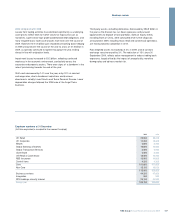 109
109 -
 110
110 -
 111
111 -
 112
112 -
 113
113 -
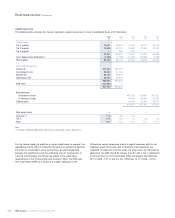 114
114 -
 115
115 -
 116
116 -
 117
117 -
 118
118 -
 119
119 -
 120
120 -
 121
121 -
 122
122 -
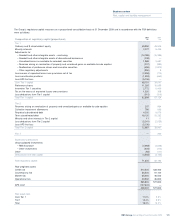 123
123 -
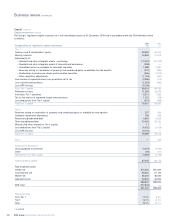 124
124 -
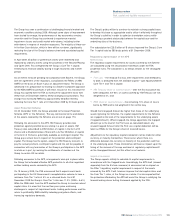 125
125 -
 126
126 -
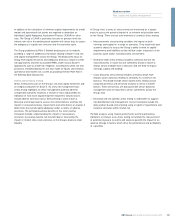 127
127 -
 128
128 -
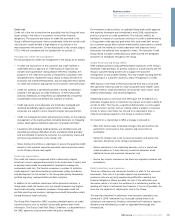 129
129 -
 130
130 -
 131
131 -
 132
132 -
 133
133 -
 134
134 -
 135
135 -
 136
136 -
 137
137 -
 138
138 -
 139
139 -
 140
140 -
 141
141 -
 142
142 -
 143
143 -
 144
144 -
 145
145 -
 146
146 -
 147
147 -
 148
148 -
 149
149 -
 150
150 -
 151
151 -
 152
152 -
 153
153 -
 154
154 -
 155
155 -
 156
156 -
 157
157 -
 158
158 -
 159
159 -
 160
160 -
 161
161 -
 162
162 -
 163
163 -
 164
164 -
 165
165 -
 166
166 -
 167
167 -
 168
168 -
 169
169 -
 170
170 -
 171
171 -
 172
172 -
 173
173 -
 174
174 -
 175
175 -
 176
176 -
 177
177 -
 178
178 -
 179
179 -
 180
180 -
 181
181 -
 182
182 -
 183
183 -
 184
184 -
 185
185 -
 186
186 -
 187
187 -
 188
188 -
 189
189 -
 190
190 -
 191
191 -
 192
192 -
 193
193 -
 194
194 -
 195
195 -
 196
196 -
 197
197 -
 198
198 -
 199
199 -
 200
200 -
 201
201 -
 202
202 -
 203
203 -
 204
204 -
 205
205 -
 206
206 -
 207
207 -
 208
208 -
 209
209 -
 210
210 -
 211
211 -
 212
212 -
 213
213 -
 214
214 -
 215
215 -
 216
216 -
 217
217 -
 218
218 -
 219
219 -
 220
220 -
 221
221 -
 222
222 -
 223
223 -
 224
224 -
 225
225 -
 226
226 -
 227
227 -
 228
228 -
 229
229 -
 230
230 -
 231
231 -
 232
232 -
 233
233 -
 234
234 -
 235
235 -
 236
236 -
 237
237 -
 238
238 -
 239
239 -
 240
240 -
 241
241 -
 242
242 -
 243
243 -
 244
244 -
 245
245 -
 246
246 -
 247
247 -
 248
248 -
 249
249 -
 250
250 -
 251
251 -
 252
252 -
 253
253 -
 254
254 -
 255
255 -
 256
256 -
 257
257 -
 258
258 -
 259
259 -
 260
260 -
 261
261 -
 262
262 -
 263
263 -
 264
264 -
 265
265 -
 266
266 -
 267
267 -
 268
268 -
 269
269 -
 270
270 -
 271
271 -
 272
272 -
 273
273 -
 274
274 -
 275
275 -
 276
276 -
 277
277 -
 278
278 -
 279
279 -
 280
280 -
 281
281 -
 282
282 -
 283
283 -
 284
284 -
 285
285 -
 286
286 -
 287
287 -
 288
288 -
 289
289 -
 290
290 -
 291
291 -
 292
292 -
 293
293 -
 294
294 -
 295
295 -
 296
296 -
 297
297 -
 298
298 -
 299
299 -
 300
300 -
 301
301 -
 302
302 -
 303
303 -
 304
304 -
 305
305 -
 306
306 -
 307
307 -
 308
308 -
 309
309 -
 310
310 -
 311
311 -
 312
312 -
 313
313 -
 314
314 -
 315
315 -
 316
316 -
 317
317 -
 318
318 -
 319
319 -
 320
320 -
 321
321 -
 322
322 -
 323
323 -
 324
324 -
 325
325 -
 326
326 -
 327
327 -
 328
328 -
 329
329 -
 330
330 -
 331
331 -
 332
332 -
 333
333 -
 334
334 -
 335
335 -
 336
336 -
 337
337 -
 338
338 -
 339
339 -
 340
340 -
 341
341 -
 342
342 -
 343
343 -
 344
344 -
 345
345 -
 346
346 -
 347
347 -
 348
348 -
 349
349 -
 350
350 -
 351
351 -
 352
352 -
 353
353 -
 354
354 -
 355
355 -
 356
356 -
 357
357 -
 358
358 -
 359
359 -
 360
360 -
 361
361 -
 362
362 -
 363
363 -
 364
364 -
 365
365 -
 366
366 -
 367
367 -
 368
368 -
 369
369 -
 370
370 -
 371
371 -
 372
372 -
 373
373 -
 374
374 -
 375
375 -
 376
376 -
 377
377 -
 378
378 -
 379
379 -
 380
380 -
 381
381 -
 382
382 -
 383
383 -
 384
384 -
 385
385 -
 386
386 -
 387
387 -
 388
388 -
 389
389 -
 390
390
 |
 |
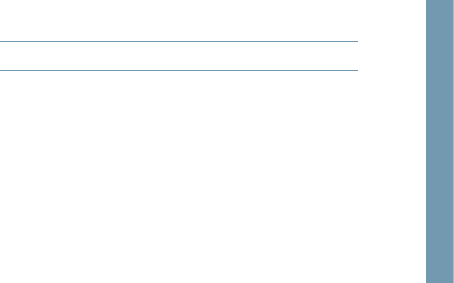
Business review
Risk, capital and liquidity management
Risk, capital and liquidity management
On pages 117 to 206 of the Business review certain information has
been audited and is part of the Group’s financial statements as
permitted by IFRS 7. Other disclosures are unaudited and labelled with
an asterisk (*). Key points within this section generally relate to the
Group before RFS Holdings minority interest.
Overview*
Conditions during the year continued to prove challenging as the
ongoing deterioration in economic conditions and financial markets seen
during 2008 continued into 2009. Market stress peaked during the first
quarter of 2009 with broad improvement since then. This reflects a
global effort by many governments and central banks to ease monetary
conditions, increase liquidity within the financial system and support
banks with a combination of increased capital, guarantees and
strengthened deposit insurance. One resulting benefit for banks
generally has been a significant improvement in the liquidity of money
and debt markets. At the same time, regulatory oversight of the banking
sector has increased globally and is expected to continue at a
heightened level.
More recently, the major economies have started to demonstrate a
gradually improving macroeconomic position, although conditions
remain fragile. Areas of particular uncertainty include possible effects
from governments ending their financial stimulus initiatives and central
banks moving to exit from positions of historically very low interest rates,
as well as reversing quantitative easing. These look likely to occur
against a backdrop of heightened personal and corporate insolvency as
well as rising unemployment.
The Group has been developing and adapting to an evolving economic
environment, against a background of the strategic review which
includes a clearly stated ambition to achieve standalone strength. The
core aims of the strategic plan are to improve the risk profile of the
Group and to reposition the balance sheet around the Group’s core
strengths. The Group level risk appetite statements and limits have been
reviewed to ensure they are in line with the strategy. Any potential areas
of misalignment between risk appetite and the Group strategy have
been discussed by the Executive Risk Forum and remediation plans
have been put in place.
Enhancements have been made to a number of the risk frameworks,
including:
•A new credit approval process has been introduced during the year,
based on a pairing of business and risk managers authorised to
approve credit. This replaced the former credit committee process;
•Exposure to higher risk countries has been reduced and a new risk
limits framework has been implemented across the Group;
•Single name and sector wide credit concentrations continue to
receive a high level of attention and further enhancements to the
frameworks were agreed in the fourth quarter of the year;
•In addition to the move to value-at-risk (VaR) based on a 99%
confidence level, from 95%, the Group has improved and
strengthened its market risk limit framework increasing the
transparency of market risk taken across the Group’s businesses in
both the trading and non-trading portfolios;
•The Group’s funding and liquidity profile is supported by explicit
targets and metrics to control the size and extent of both short-term
and long-term liquidity risk; and
•An improved reporting programme has been implemented to
increase transparency and improve the management of risk
exposures.
Credit impairments in 2009 were materially higher than the previous
year. As the year progressed, the level of impairments moderated, with
the highest quarterly charge incurred in the second quarter. It is
expected that the results for 2010 and 2011 will continue to be affected
by a heightened level of credit impairments as exposures in the Non-
Core division are managed down and the economic environment
continues to impact the Core business. The risk weightings applied to
assets are also expected to increase due to procyclicality and as a
result the amount of capital that banks generally are required to hold
will increase. Future regulatory changes are also expected to increase
the capital requirements of the banking sector. Against this background,
the Non-Core portfolio is reducing and the Group has materially
strengthened its capital base through the B share issuance in
December 2009.
117RBS Group Annual Report and Accounts 2009
* unaudited
